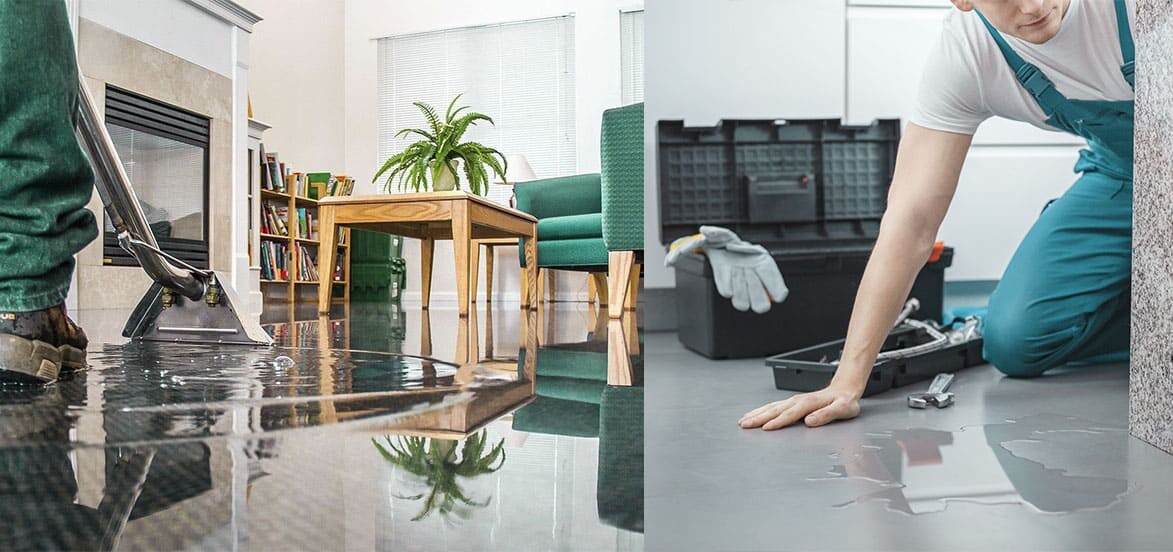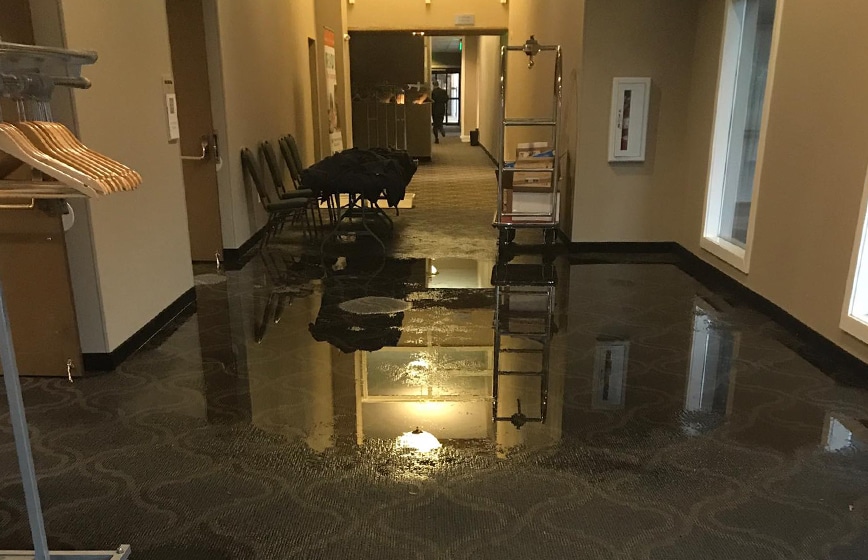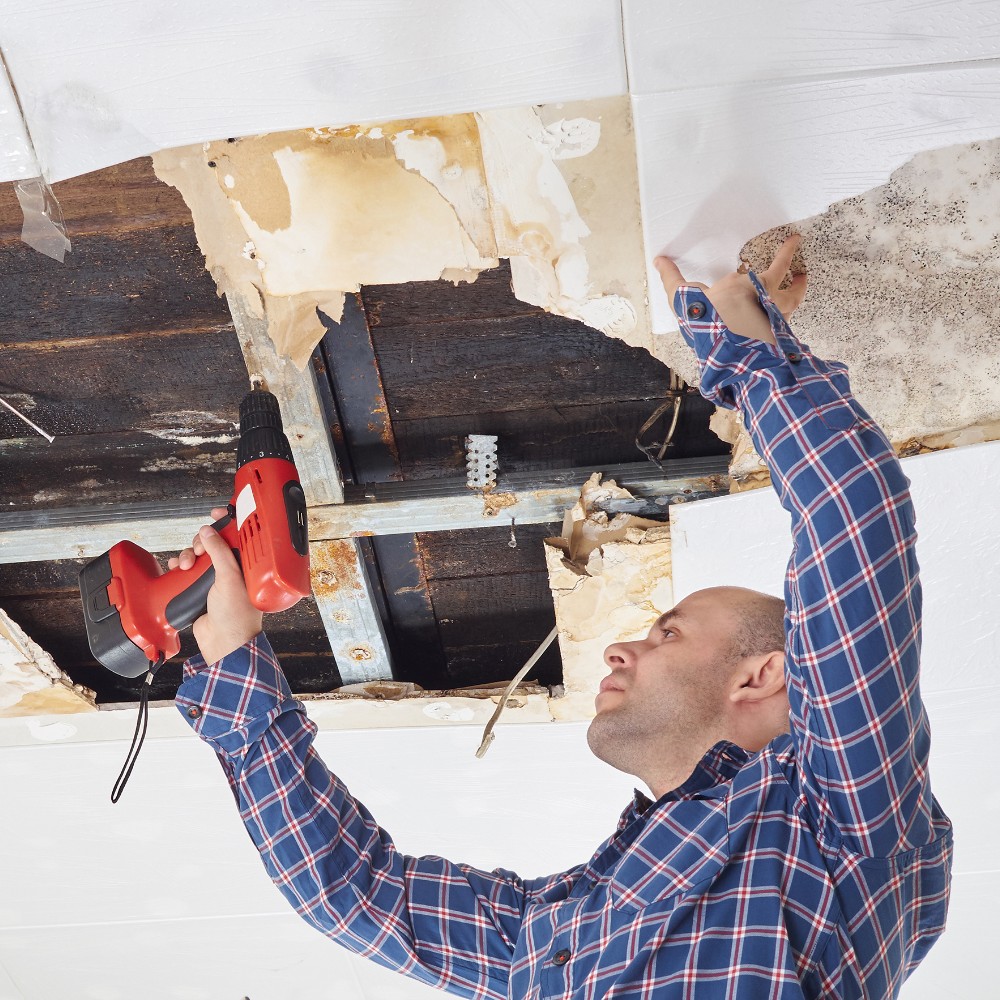Water Damage Restoration 101: Understanding the Process and Expense
Water damage can strike unexpectedly, leaving home owners in a state of complication. Comprehending the reconstruction process is crucial for effective healing. From evaluating the damage to selecting the right service provider, each step affects the total outcome and price. Factors such as the kind of water damage and urgency also play a considerable duty. What are the certain methods utilized in restoration, and just how can one plan for potential expenditures?
Kinds Of Water Damage
Water damage can arise from different sources, each presenting unique challenges for reconstruction. The 3 primary sorts of water damage are categorized based on contamination levels: tidy water, gray water, and black water. Clean water originates from resources like damaged pipelines or rain, positioning very little health and wellness dangers. Gray water, which includes wastewater from sinks or washing makers, contains contaminants that may cause pain or health problem if consumed. Black water, the most hazardous classification, comes from sewer or floodwaters, having hazardous microorganisms and pathogens. Each kind requires details restoration techniques and precaution to properly address the damage and alleviate health and wellness threats. Understanding these distinctions is vital for experts and home owners associated with the water damage reconstruction process.
Preliminary Analysis and Inspection
A thorough preliminary analysis and examination are important steps in the water damage restoration procedure. This phase starts with a professional evaluating the extent of the damage, identifying the source of the water invasion, and determining the kind of water included - Water Damage Restoration. Technicians make use of specific devices to gauge wetness degrees in numerous materials, such as walls, floors, and furnishings. Furthermore, they evaluate architectural honesty and prospective carcinogen, including mold growth. The findings from this assessment notify the remediation strategy, assisting essential actions and resource appropriation. Exact documentation of the damage is crucial for insurance coverage claims and future recommendation. Generally, this preliminary evaluation prepares for efficient restoration, making certain a comprehensive feedback to the specific circumstance available

Water Extraction Strategies
Adhering to the first assessment, efficient water extraction strategies are used to mitigate damage and protect against additional concerns. These techniques entail using specialized tools such as submersible pumps and industrial-grade vacuum cleaners. The selection of approach depends upon the volume of water present and the sort of materials impacted. For standing water, completely submersible pumps are generally made use of for quick elimination, while vacuums are optimal for extracting water from carpetings and upholstery. Furthermore, progressed techniques like water removal mats might be employed for hard-to-reach areas. The objective is to eliminate as much water as feasible, lessening the capacity for mold development and architectural damage. Trigger and reliable water removal is important in the total water damage reconstruction process.
Drying Out and Dehumidification Process
Once the water extraction is total, the drying and dehumidification process comes to be essential to bring back the affected location. This stage usually utilizes industrial-grade dehumidifiers and air moving companies to effectively lower wetness levels. The dehumidifiers reel in damp air, removing excess humidity, while air moving companies flow air to speed up evaporation. Monitoring tools is usually made use of to track moisture and temperature level levels, guaranteeing optimal drying out conditions. The period of this process can vary relying on the degree of the water damage and environmental factors. It is important to thoroughly completely dry all affected products, consisting of walls, flooring, and home furnishings, to stop mold growth and structural damage. Appropriate implementation of this action is vital for a successful remediation end result.
Cleaning Up and Sterilizing Damaged Locations

Preliminary Evaluation and Inspection
Prior to beginning any kind of reconstruction efforts, a thorough first analysis and examination of the impacted locations are essential for reliable cleaning and disinfecting. This process entails recognizing the level of water damage, determining the resource of the water invasion, and reviewing the products impacted. Inspectors typically try to find signs of mold growth, structural stability concerns, and harmed valuables. The analysis additionally includes checking dampness degrees using specific tools to ensure no covert water pockets continue to be, as these can cause additional problems. Documenting the findings is essential for preparing the following action in the reconstruction process. A comprehensive first analysis allows reconstruction professionals to design a targeted method for efficient cleaning and sterilizing, inevitably lessening damage and health and wellness threats.
Cleansing Strategies and Products
Efficient cleansing and sanitizing of water-damaged locations call for a selection of methods and items customized to the certain products impacted. For porous surfaces like drywall and carpets, removal techniques are essential to get rid of excess moisture, complied with by deep cleansing with specialized cleaning agents. Non-porous materials such as floor tile or steel can be cleaned using commercial-grade cleansers that successfully remove pollutants. Vapor cleansing is another efficient strategy, particularly for carpetings and furniture, as it utilizes high temperatures to eliminate microorganisms and mold and mildew. Furthermore, eco-friendly items are significantly preferred for their security and efficacy. Ultimately, selecting the proper cleaning approaches and products not just ensures immediate cleanliness yet additionally help in avoiding additional damage and carcinogen related to water breach.
Sanitization and Disinfection Methods
When dealing with water damage, appropriate sanitization and sanitation techniques are necessary to assure the security and health and wellness of the damaged setting. After initial cleaning, surface areas should be treated with proper disinfectants to get rid of virus, mold and mildew, and bacteria that grow in wet conditions. Typical approaches include making use of EPA-approved chemical disinfectants, which can be used with spraying or cleaning techniques. Furthermore, ultraviolet (UV) light systems can effectively disinfect areas by counteracting microbes without extreme chemicals. The choice of approach typically relies on the type of materials influenced and the extent of contamination. Eventually, detailed sanitization not only recovers a secure space but additionally helps protect against future health risks related to remaining wetness and mold and mildew growth.

Repair Work and Restoration Options

Elements Affecting Restoration Expenses
The degree of water damage directly affects the reconstruction sets you back property owners can anticipate to incur. Variables such as the source of the water, the period of direct exposure, and the damaged products considerably affect prices. Clean water damage from a broken pipe is usually less expensive to restore compared to damage created by sewer (Water Damage Restoration). Furthermore, the level of contamination determines the need for specialized cleansing and disposal solutions, further raising costs. Geographical area also plays a role, as local labor rates and schedule of restoration services can vary. The necessity of the reaction impacts expenses; quicker interventions normally lead to decrease total costs by stopping additional damage. Comprehending these variables is important for house owners when approximating remediation prices
The 3 primary kinds of water damage are categorized based on contamination degrees: clean water, gray water, and black water. A comprehensive initial analysis and evaluation are crucial steps in the water damage restoration process. For standing water, completely imp source submersible pumps are generally used for quick elimination, while vacuum cleaners are ideal for removing water from rugs and upholstery. The extent of water damage straight affects the reconstruction sets you back house owners can anticipate to incur. Clean water damage from a busted pipeline is normally less pricey to bring back compared to damage triggered by sewage.